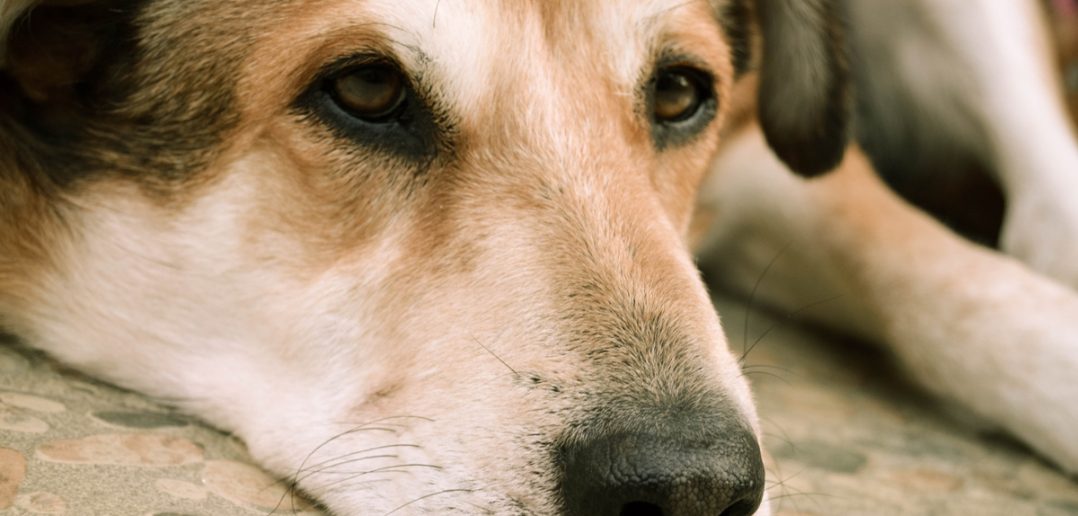Osteoarthritis is one of the most frequent causes of pain in small animals, according to The International Veterinary Academy of Pain Management (IVAPM). When an older dog, cat or horse is limping, owners can easily suspect that the problem is resulting from an injury, vertebral issue, or osteoarthritis, and they can immediately see their vet. However, sometimes, signs of pain are less obvious and may comprise a change in posture, eating habits, or even mood. Watch out for less obvious signs – especially in older pets – and seek help from your veterinarian as soon as possible.
Is It Osteoarthritis?
Your dog or cat may have had no problems bounding up and down steps, yet seem less willing to do so as the years go by. This seemingly simple action can become more difficult when the cartilage that cushions joints begins to wear down. Osteoarthritis can be hard to identify because changes are usually subtle and can include a reduced range of motion, a crunching sound in a joint (in the case of dogs, not cats), weight loss, loss of appetite and poor grooming habits.
You should also watch out for ways in which your pet might try to communicate its pain. It might look at you, seemingly asking you to transport it up the steps or up to the sofa with you. It might have a sad expression, or lack the joy usually displayed when you announced it’s time to walk or enjoy a favorite treat.
Osteoarthritis Affects Dogs & Cats Differently
Joint issues affect canines and felines in different ways – including the location of pain. In cats, for instance, the most affected joints are the elbows and hips, while in dogs, they include the stifles, hips and elbows. Even when joints like the hips are involved, you may not necessarily notice lameness, because joints can be bilaterally affected. This means that the pet will often ‘compensate’ and appear to walk normally.
In a study by Clarke and Bennett on cats with osteoarthritis, it was found that only 43% of affected cats were limping, while 71% were unwilling to jump. This is why, often, changes in habits, behavior and exercise levels are the best sign that a visit to the vet may be required. Other often unsuspected symptoms of joint pain include weight gain, irritability, and loss of muscle mass in the limbs and spine.
How Can Your Vet Help?
Veterinarians themselves may find it hard to diagnose joint issues in small pets, because cats (and some dogs), for instance, can be resistant to physical manipulation. Some will simply ‘freeze up’ when the vet attempts to assess joint mobility. Your vet will ideally look for the dog’s response to joint palpitation and the presence of a crackling sensation when the joint is moved. You may be surprised to learn that many pet owners are also seeking help from psychics once their dog is officially diagnosed by the vet.
If you ever asked yourself, ‘Are psychics real?’ you may be surprised to know that some can actually be helpful with identifying hidden pain, because they are masters at studying body language and movement. The one proviso to this strategy is that you visit your vet first, and that if you do see a psychic, you should opt for one that has the qualifications and experience to analyze animal movement.
How Can You Quell Osteoarthritic Pain In Your Pet?
Your vet may recommend supplements to promote better joint health for your dog or cat. Pain control is also key. Your pet shouldn’t have to undergo unwarranted pain when it can be managed easily. The most commonly used medication are non-steroidal anti-inflammatory drugs (NSAIDs). They do have side-effects (particularly for the liver) if used long-term, however, so regular bloodwork will be necessary to ensure your dog is okay to continue with this approach. Other treatments such as cold laser, physiotherapy and acupuncture may also be of help.
There are so many hidden signs of osteoarthritis in dogs and cats. Your pet might be skilfully compensating for pain – so much so that it may take a big change in behavior for you to suspect something is wrong. Because osteoarthritis is very common in older small pets (as it is in older humans), having a yearly (or bi-yearly) ‘age checkup’ is a good way to spot potential problems so they can be treated before they start causing major pain.




